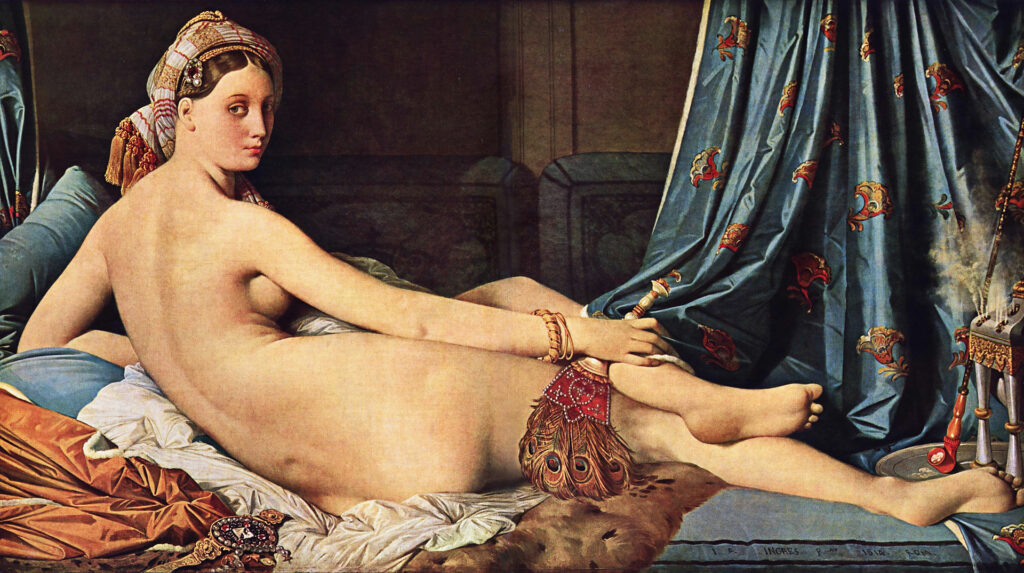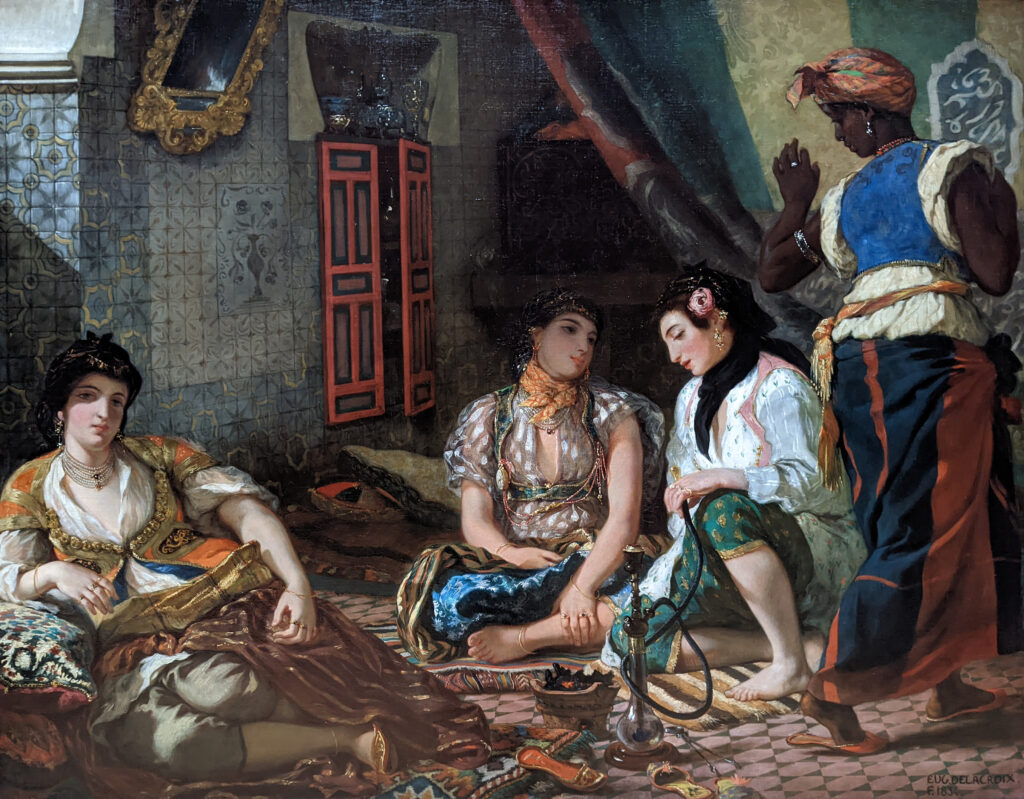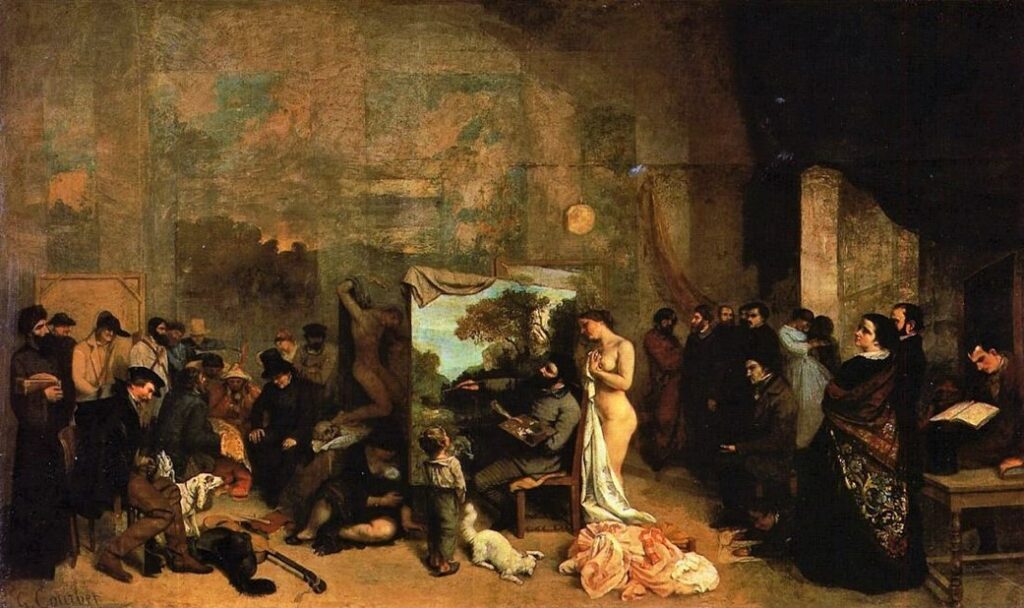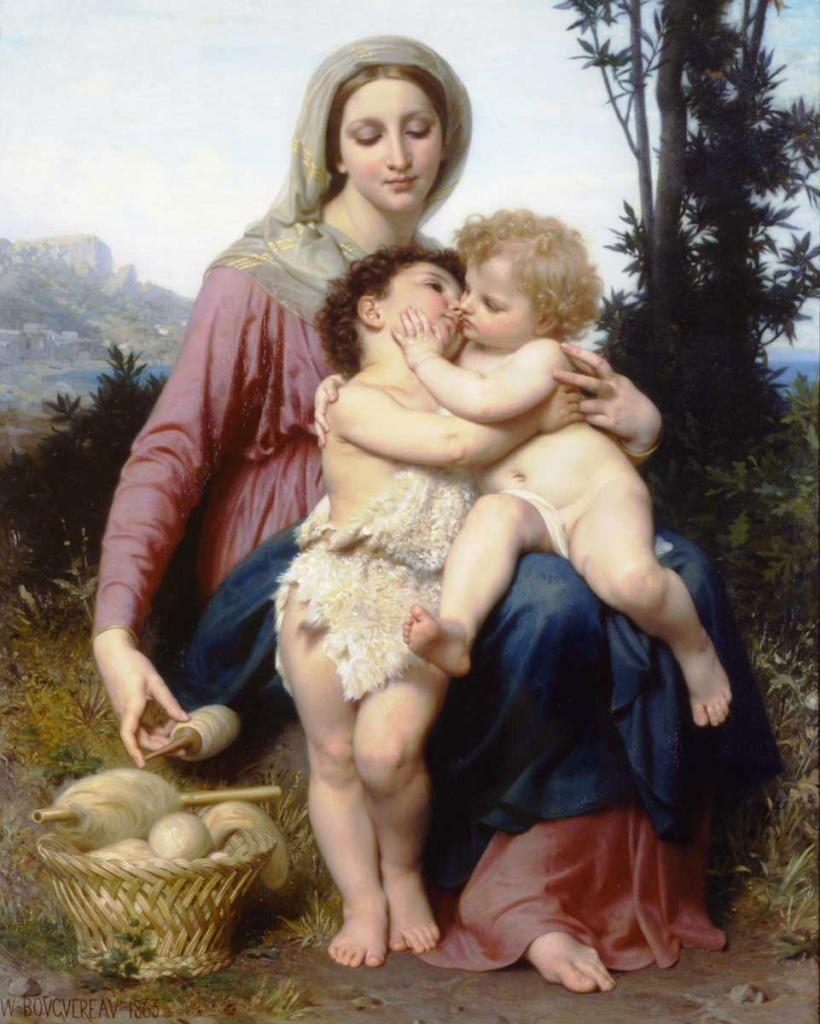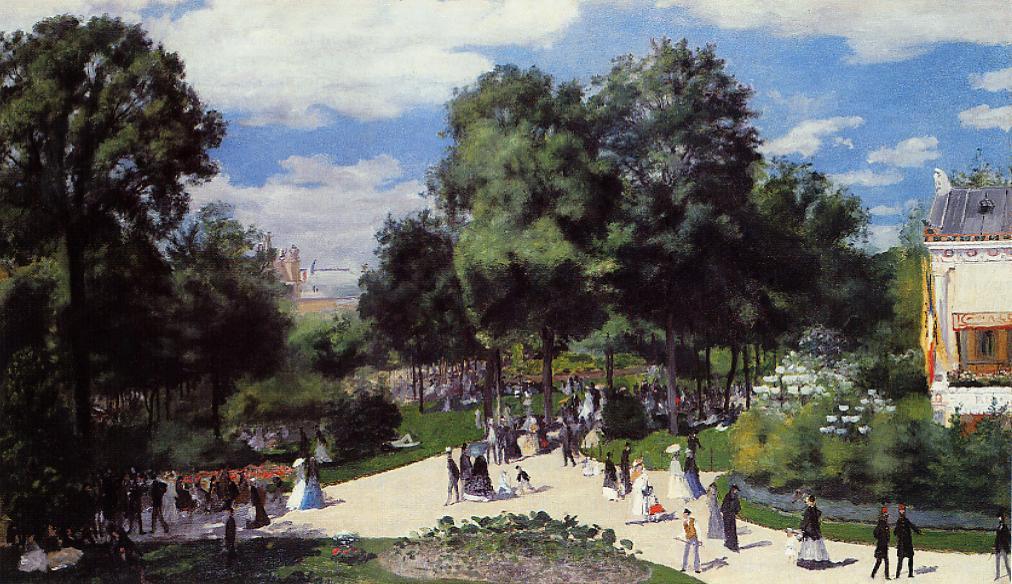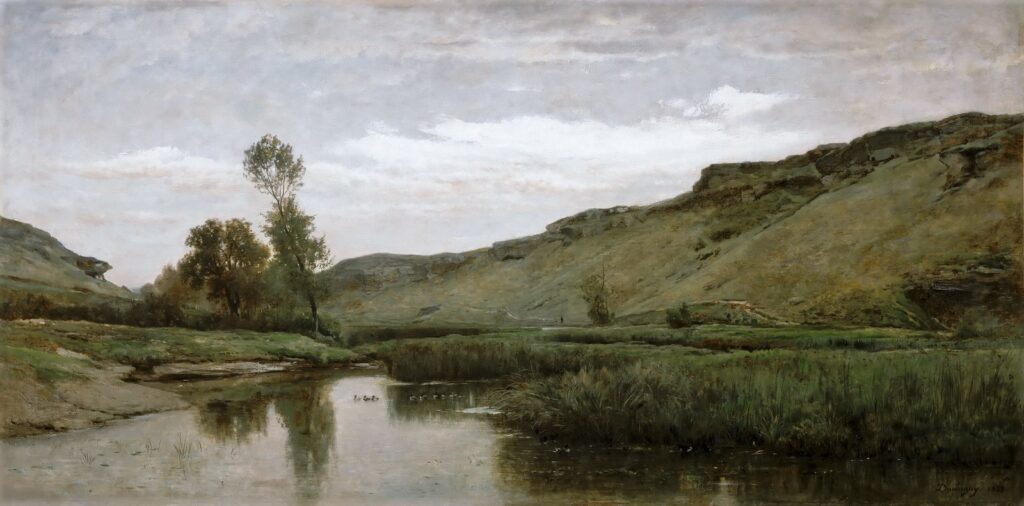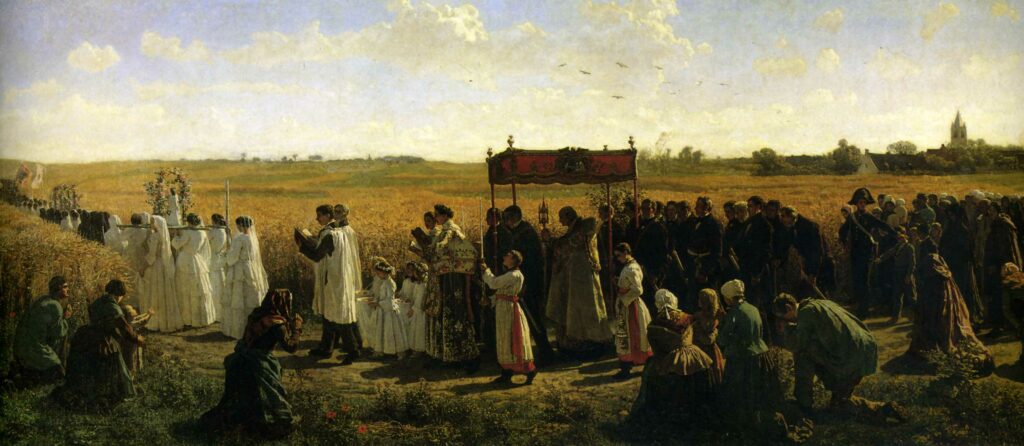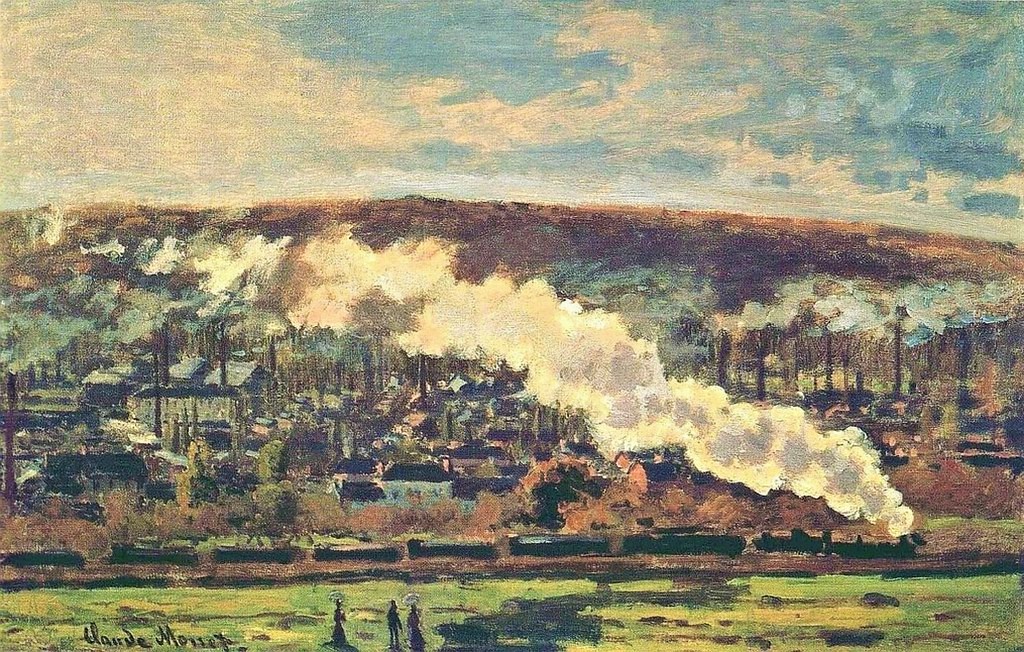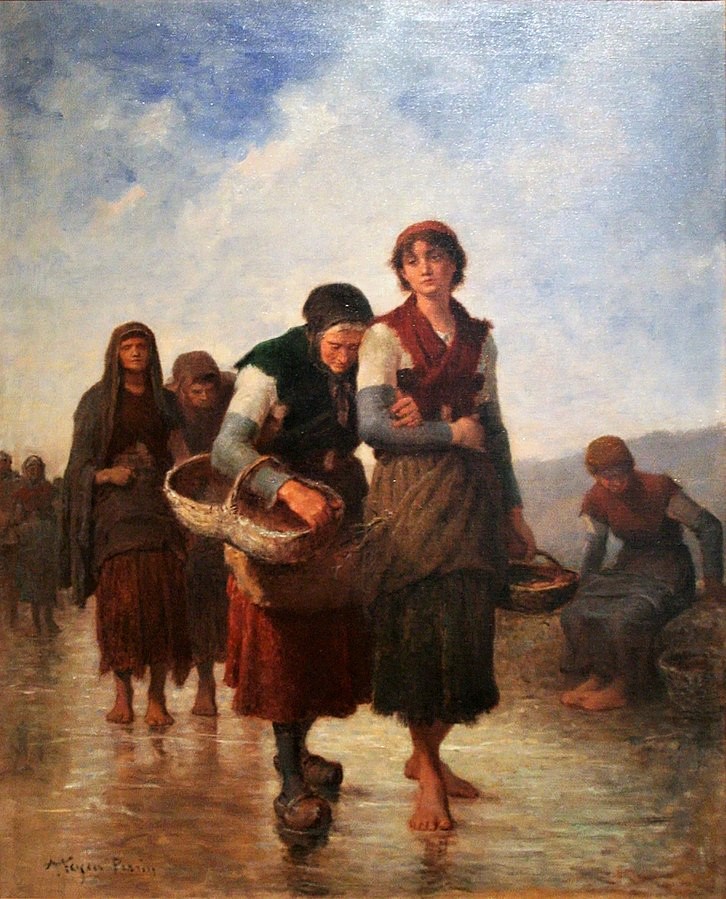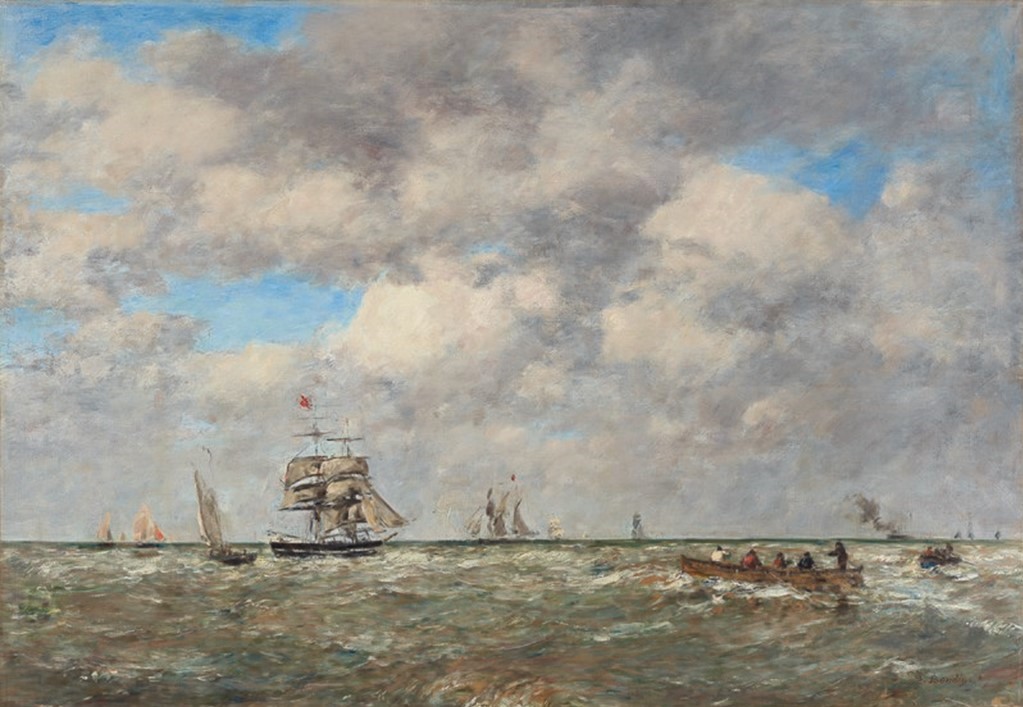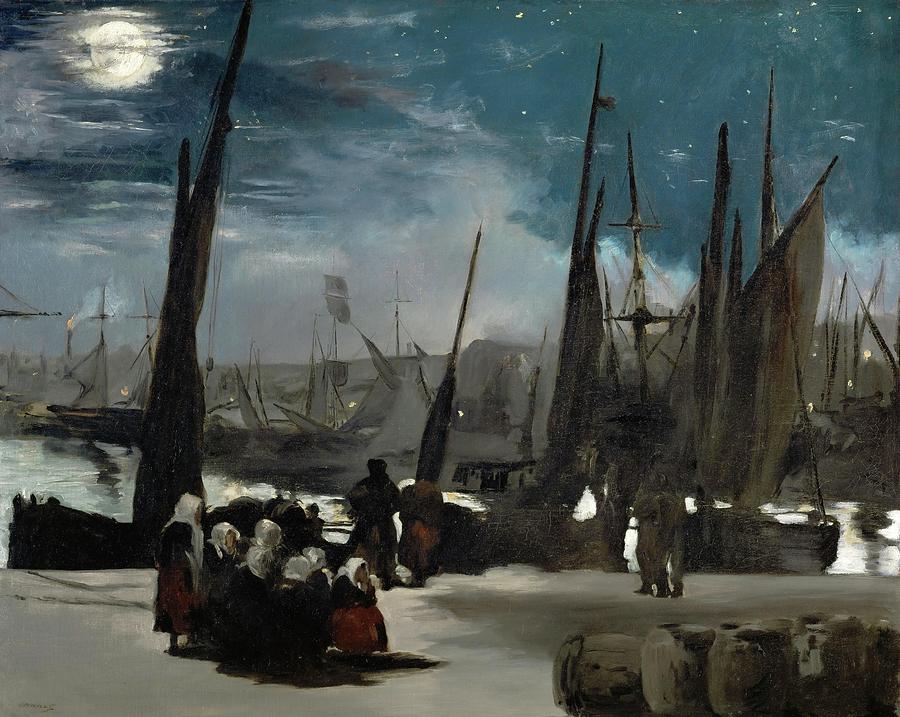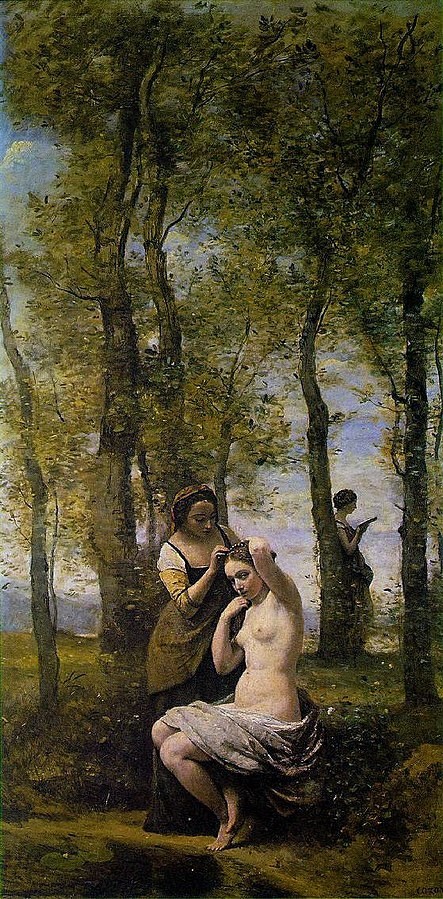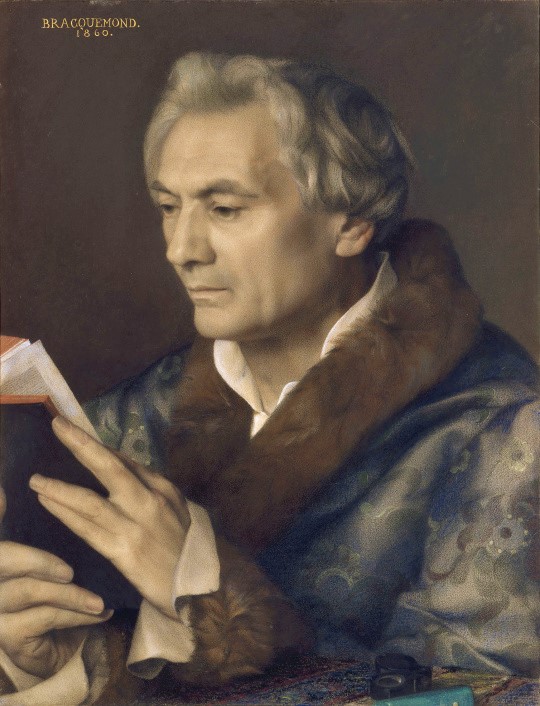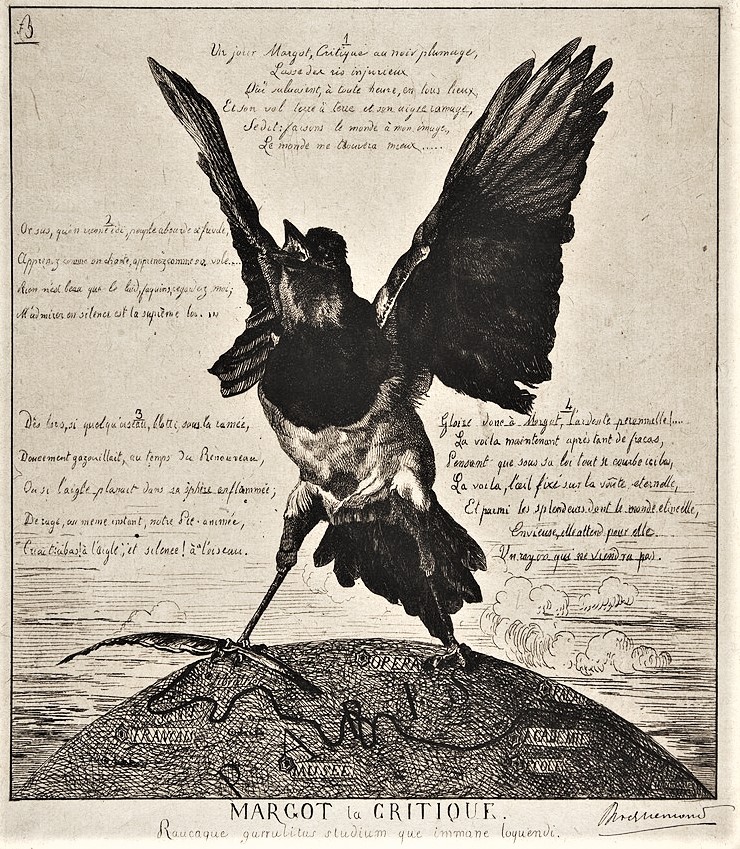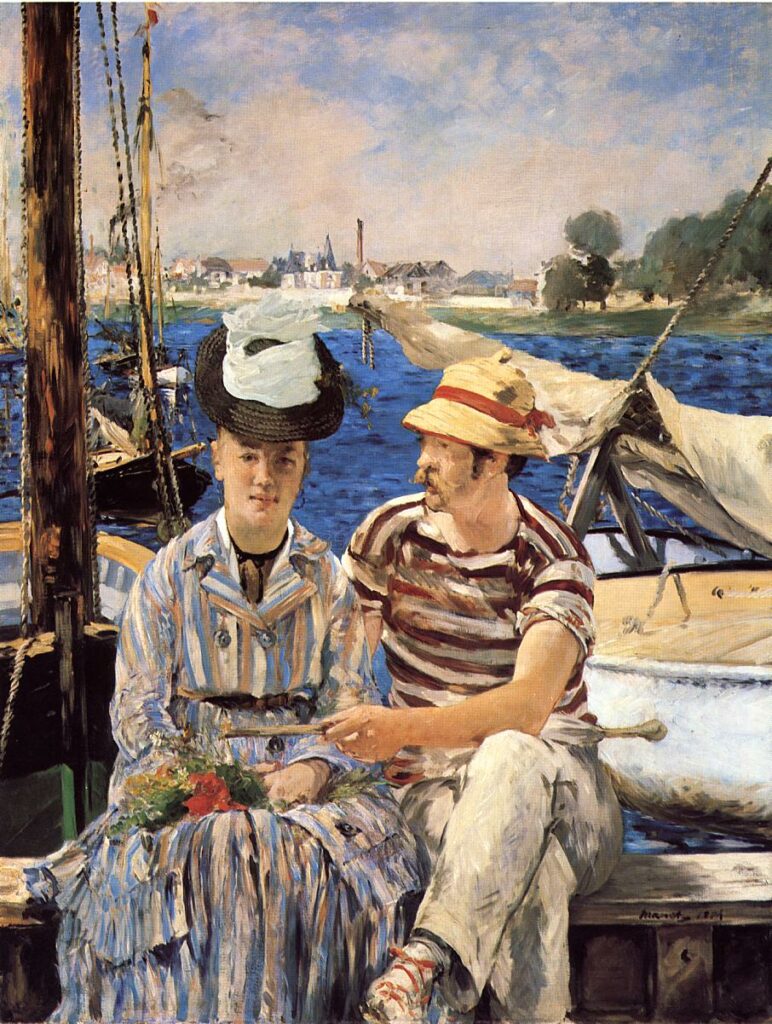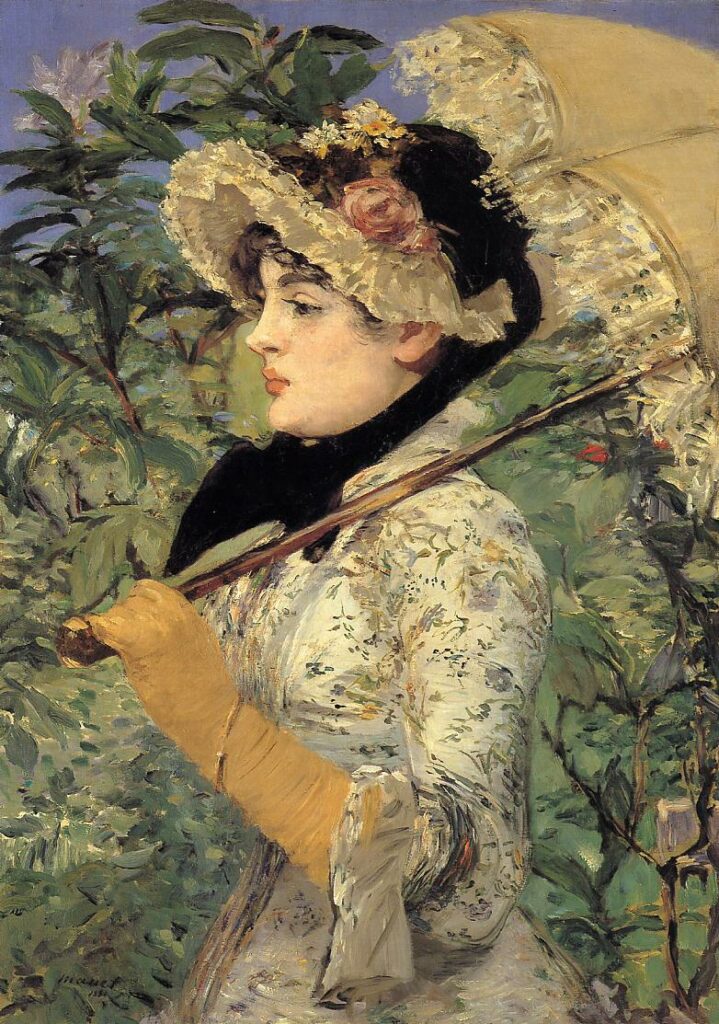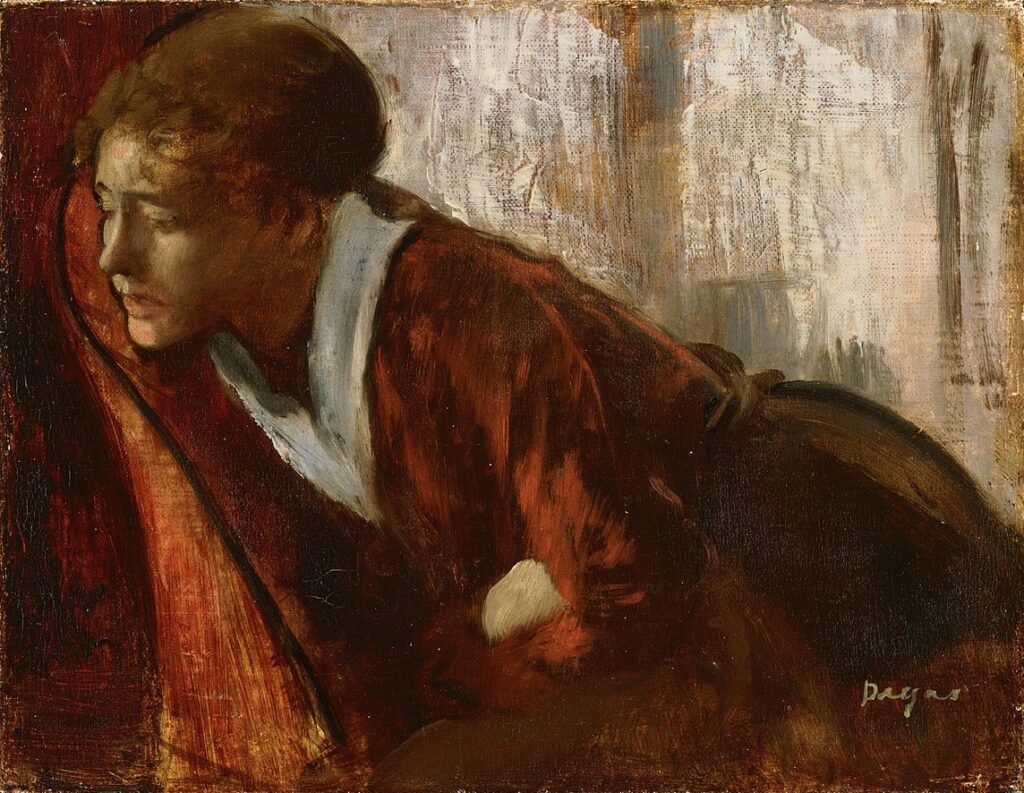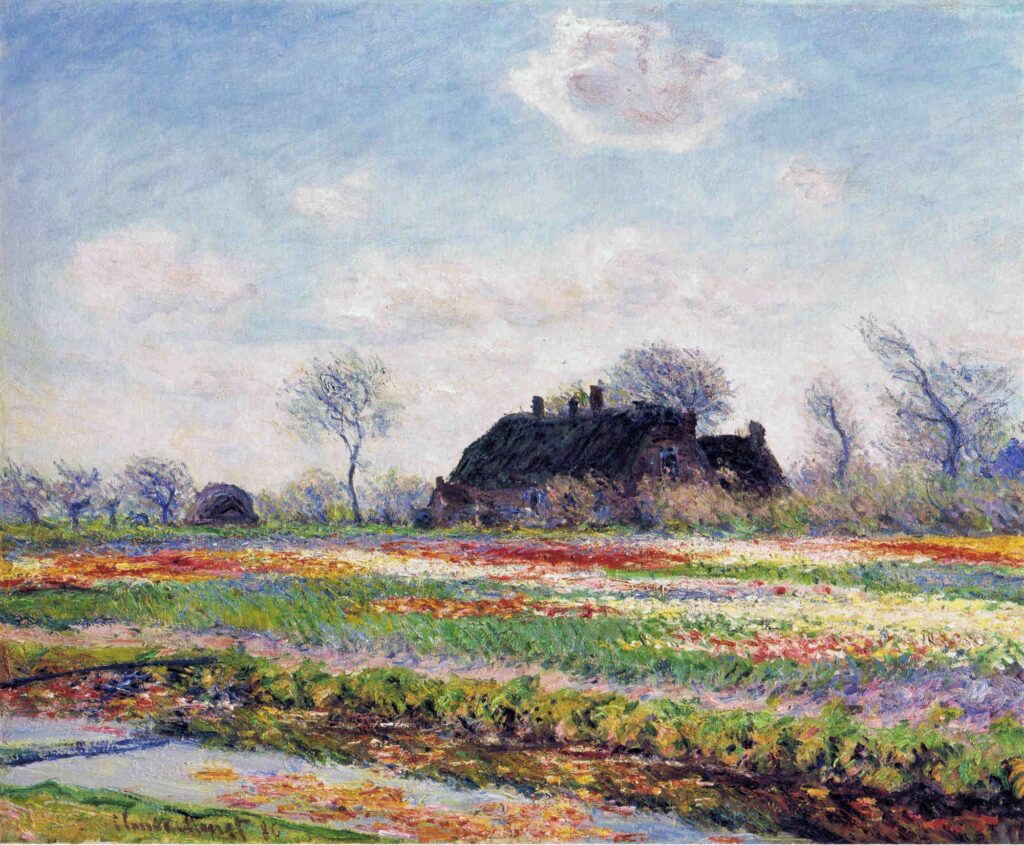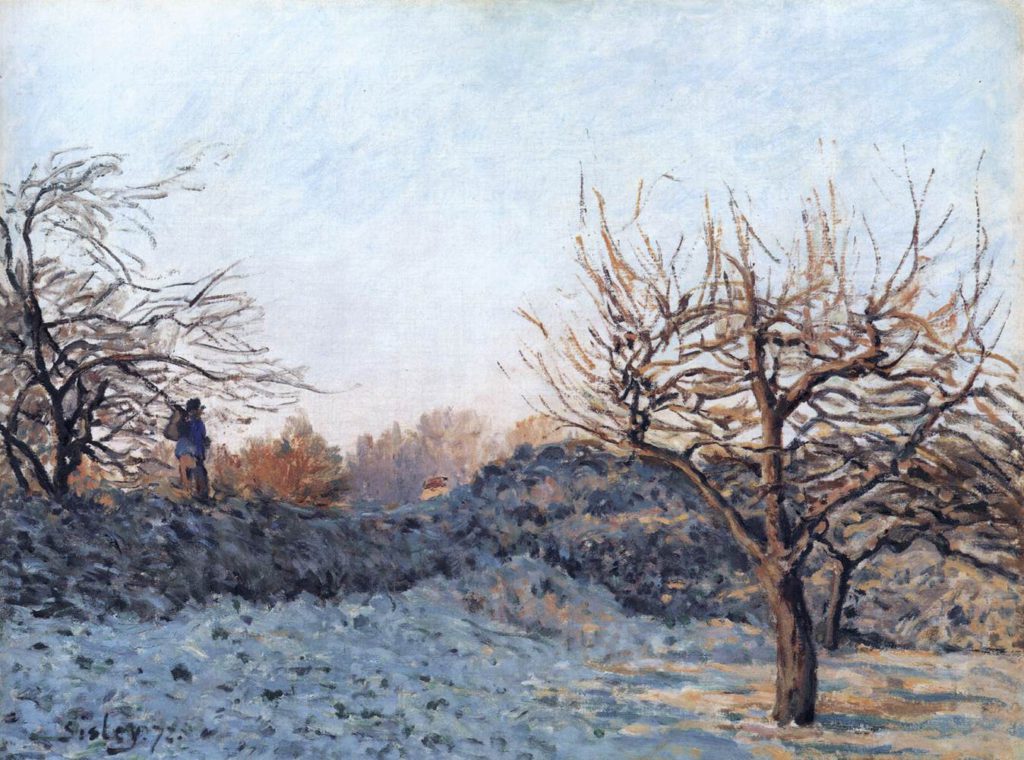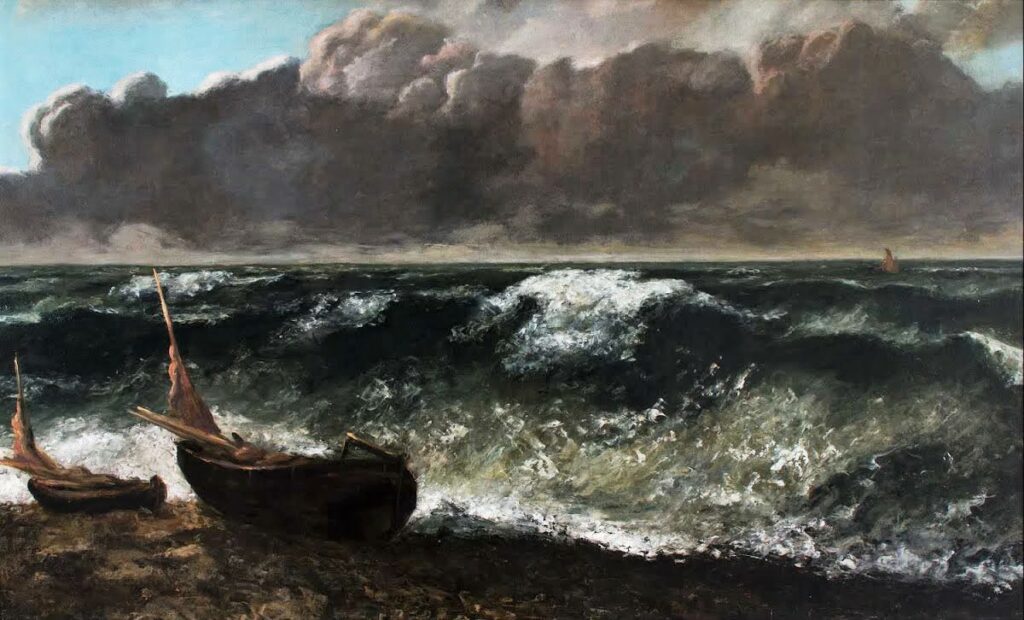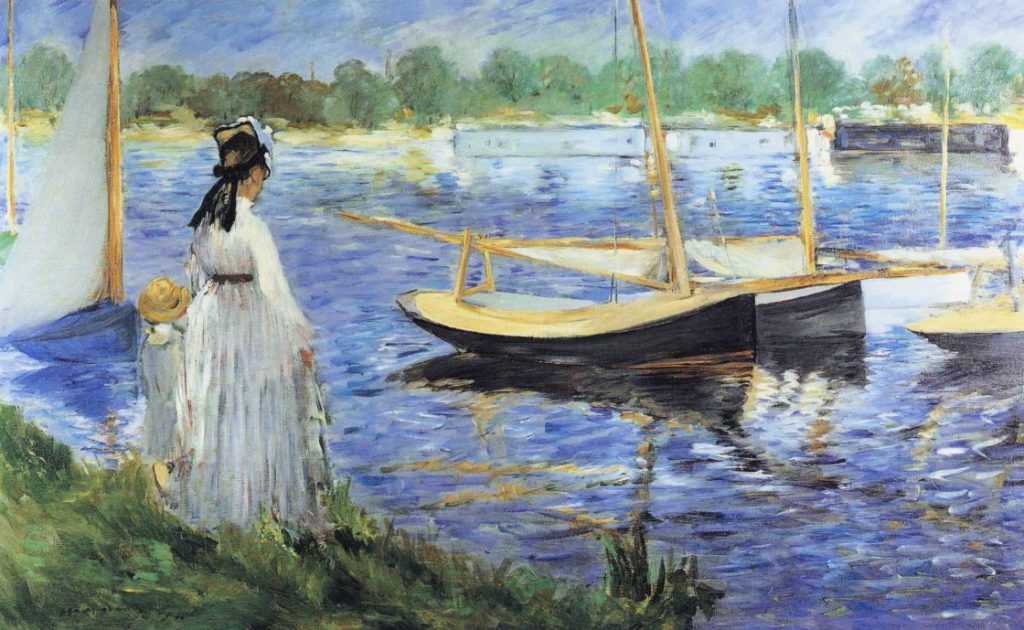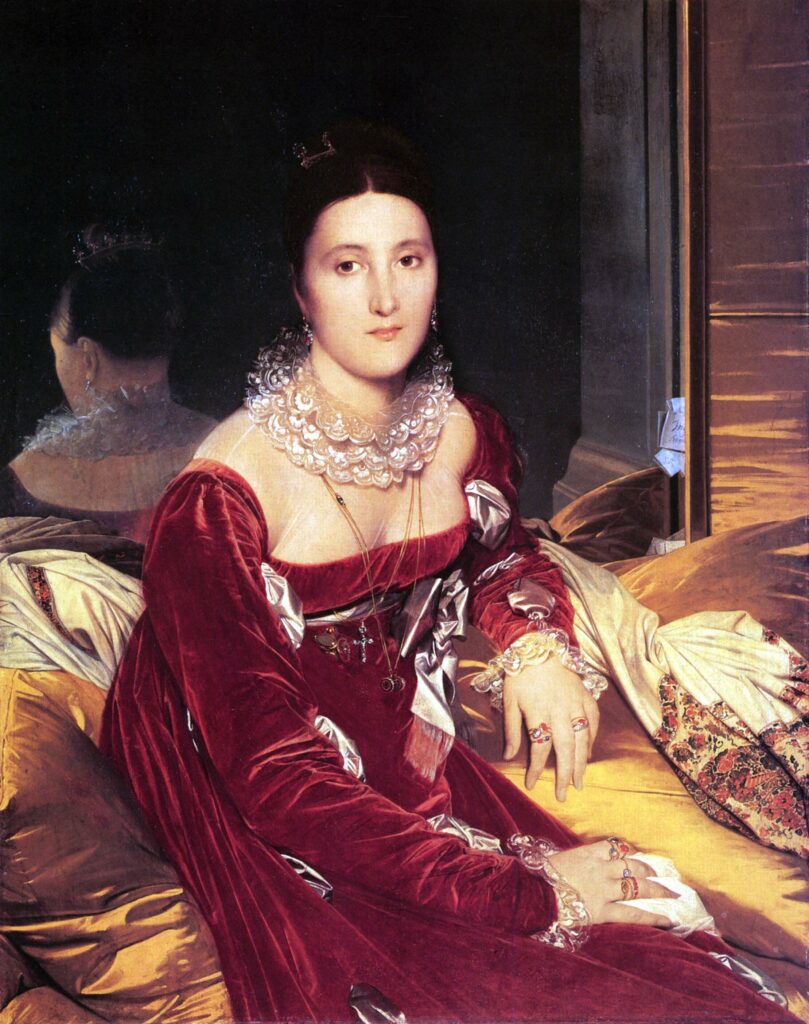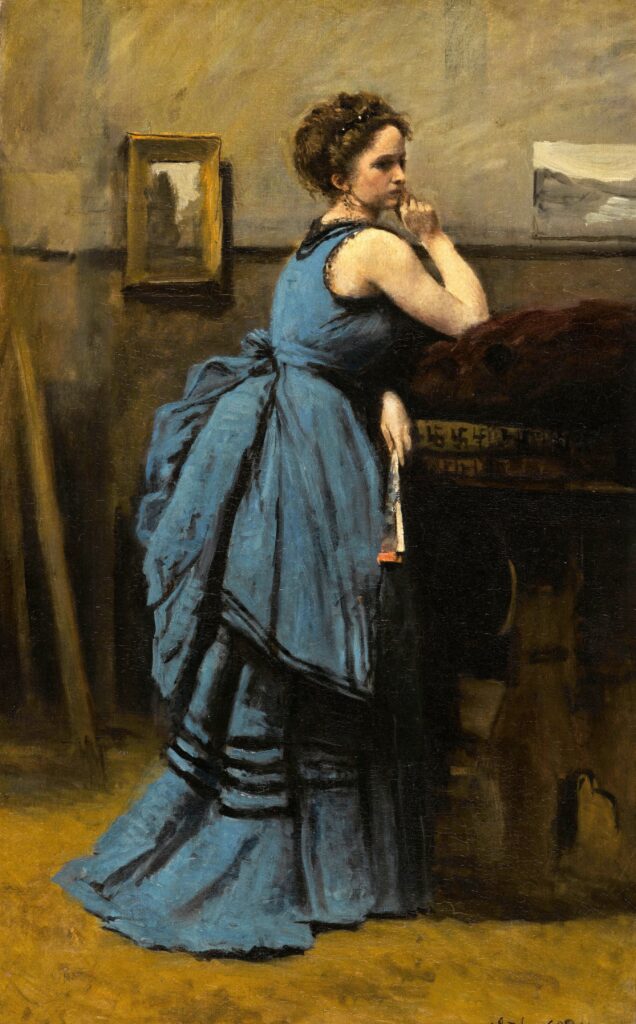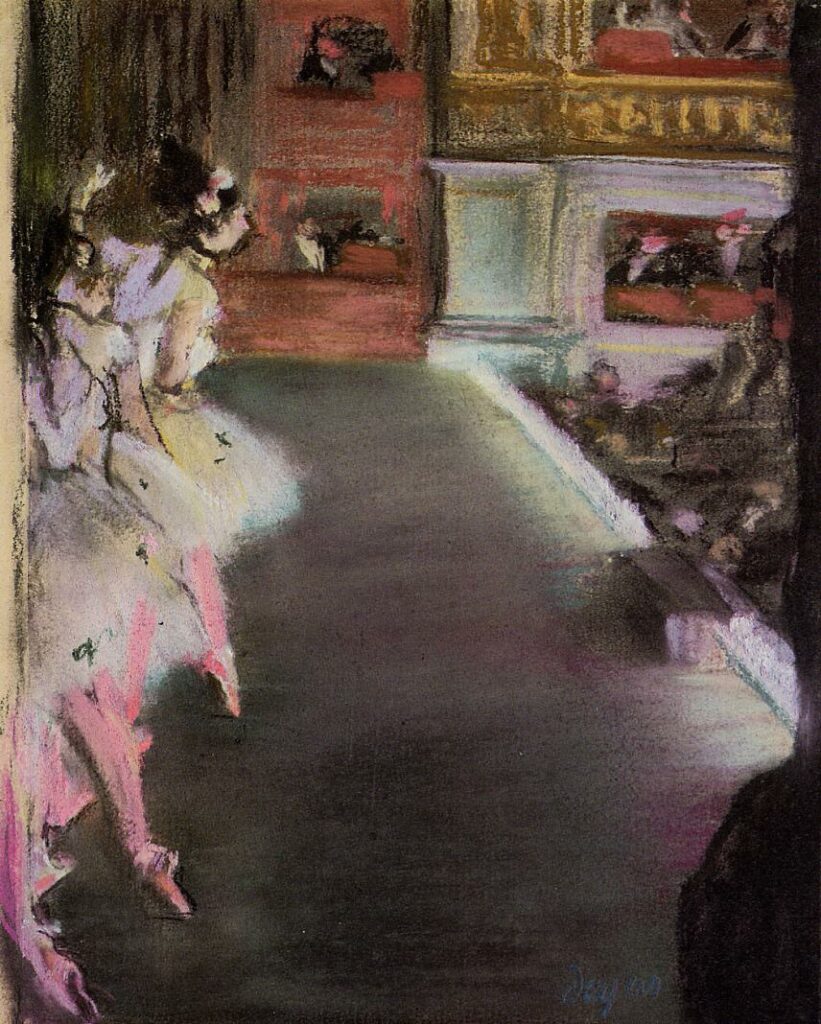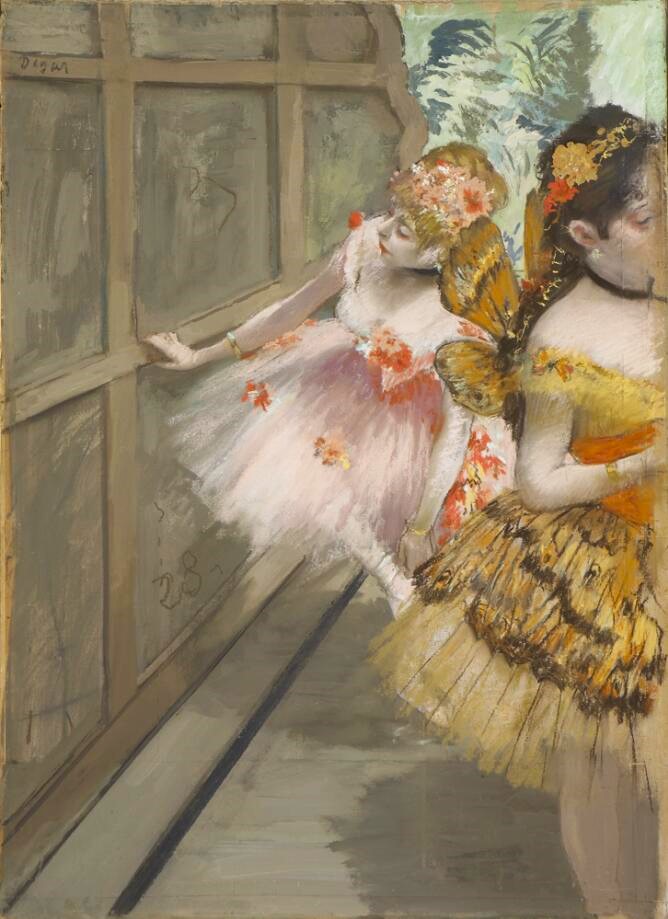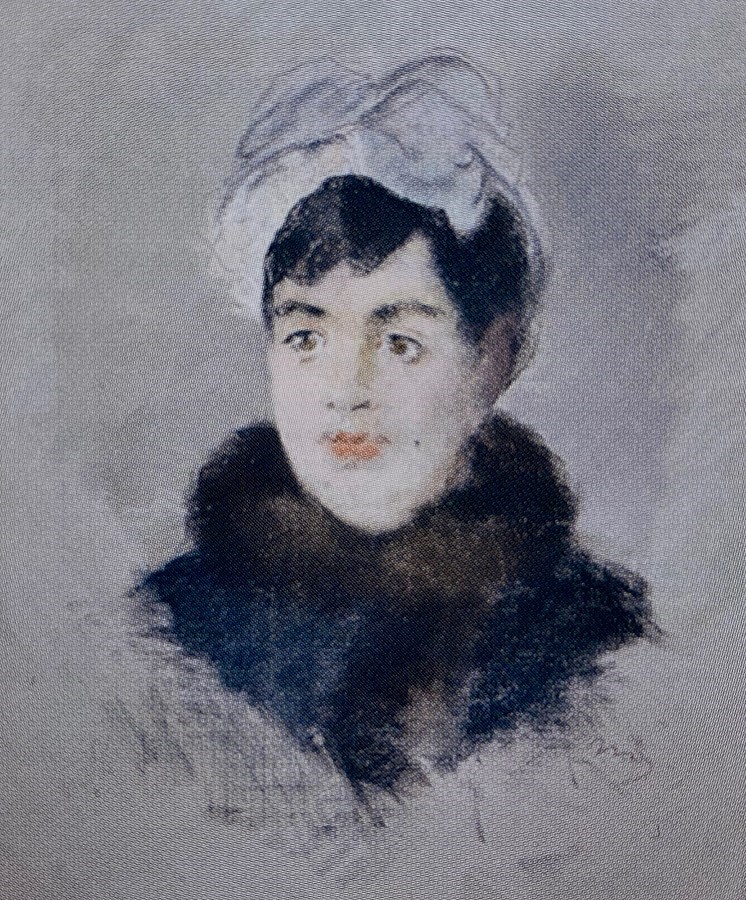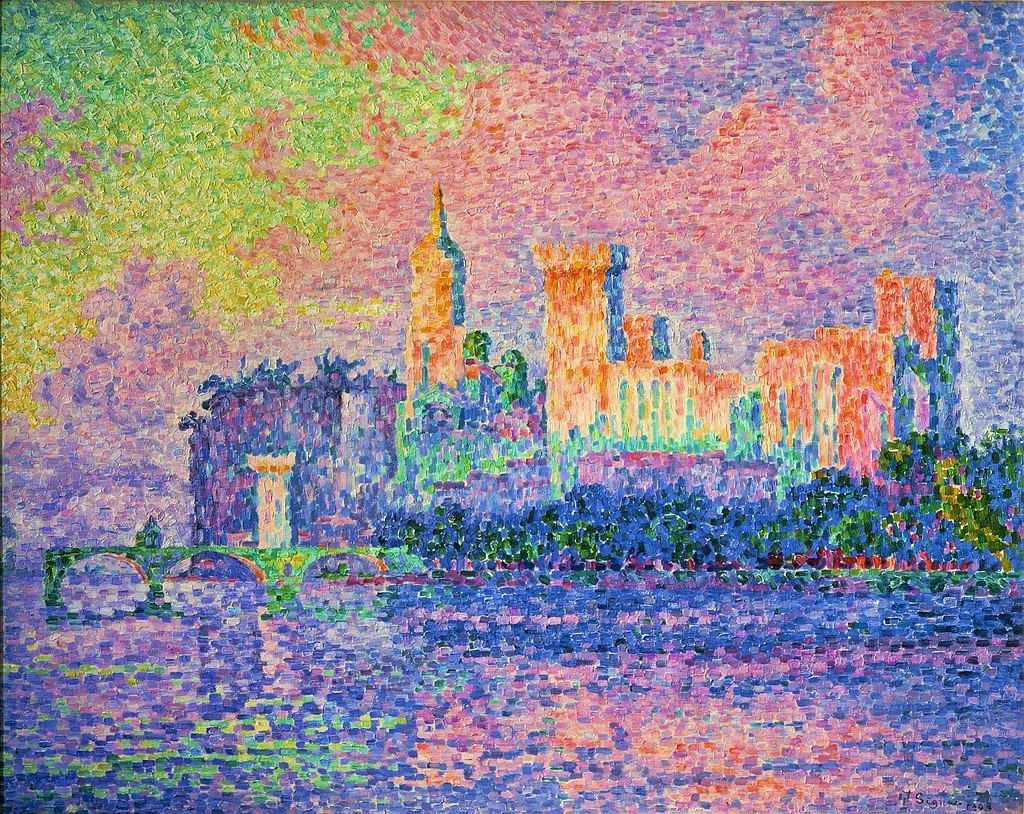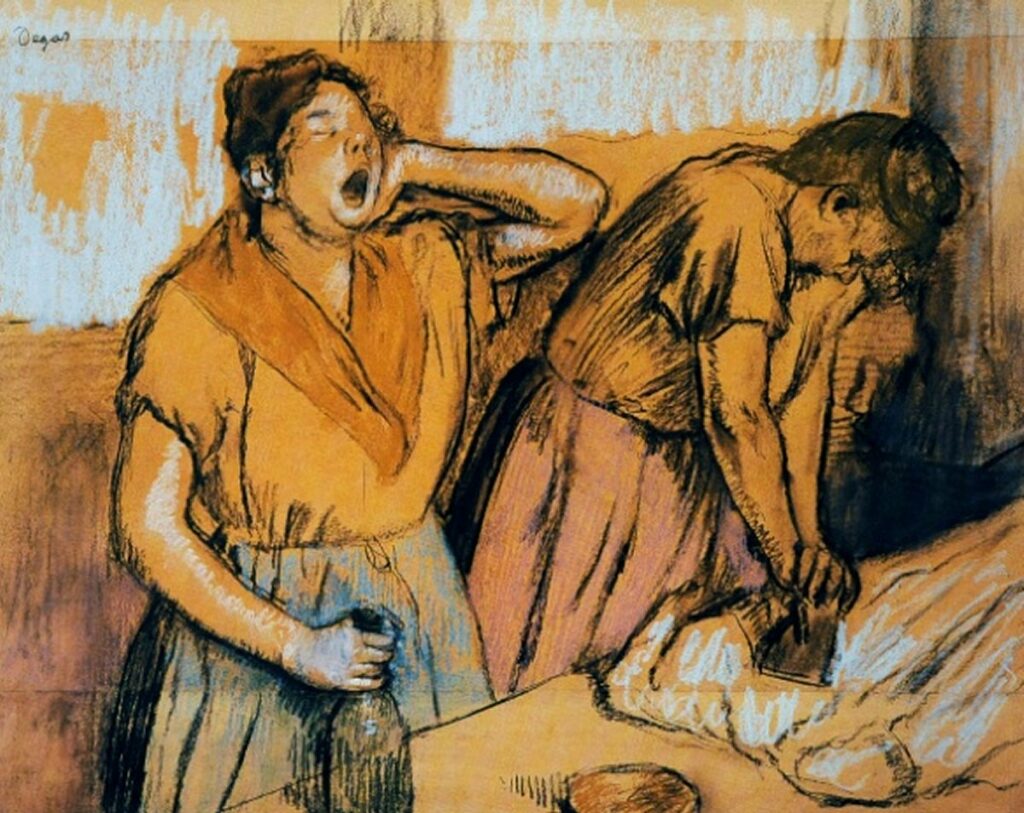Meta-Impressionism / Other exhibitions
Expositions Universelle
(World Exhibitions / World Fairs)
A universal recognition
Introduction:
The ‘Expositions Universelle’ exhibited the latest scientific-technical and cultural achievements (R3,p704). In English they were called the World Exhibitions or World Fairs (R1,p13). There were exhibitions of education, furniture, industrial products and agricultural products and so on (R231/1889). These exhibitions stood in a broader tradition of international World fairs (iR3). Part of these exhibitions (since 1855) was the exhibition of Fine Arts. We focus on these exhibitions of Fine Arts and especially those held in Paris. The art-works were (mostly) divided in 5 ‘classes’: 1. oil paintings; 2. other paintings and drawings; 3. sculptures and engravings on medals; 4. architectural models and drawings; 5. engravings and lithography. The art that was exhibited can be seen as the standard in terms of art at that time. It was the art that the countries wanted to show the world as their best art. For the artists it was a (posthumous) universal recognition.
In 1855 France especially presented Ingres, Delacroix, but also Decamps. In 1867 and 1878 the Neo-classicists and the Barbizon painters were about equally presented. But in 1889 and 1900 the Neo-Classicist are much less presented and mostly as portraitists. Corot was most amply presented in 1889. In 1889 the Impressionists started to be present and in 1900 they had a room of their own. Still, the Neo-Classicist Gérôme called it the ‘disgrace of France’.
Sources on Impressionism lay much emphasize on the individual independant exhibitions of Courbet in 1855 and 1867 and of Manet in 1867 (R3,p33). Rewald mentions that in 1855 ’the jury had refused two of his most important canvases’ (R1,p16), but doesn’t mention that 11 other works had been accepted and ended up in the catalogue (iR1). In 1867 four of Courbet his works were accepted and ended up in the catalogue (R231), still Denvir emphasizes that his Pavillon du Réalisme and the pavillon of Manet were mocked (R5,p43+45). Courbet and Manet are put down as being refused and mocked (like later the ‘impressionists’) and therefor organised their independant exhibitions. But the ‘impressionist’ expositions were independant group exhibitions. They were organised by artists that often had not much money to spend contrariwise to Courbet and Manet who had enough money to organize their own expensive individual exhibitions. (And, by the way, the ‘impressionists’ were more often accepted than rejected for the Salon and more than once received positive reviews.) These same sources hardly mention the partaking of the ‘impressionists’ in 1889 and 1900 at the Exposition Universelle. For 15 of them this recognition came just 3 years after the last ‘impressionist’ exposition in 1886.
1851 in London:
The first World Fair was held in 1851 in London in the famous Crystal Palace (R3,p704). There was no art exhibition (R116I,p106). More info: WikiPedia (iR3).
1853 in New York:
The second World Exhibition was held in New York from 1853/07/14 tilll 1854/11/14. It was called the Exhibition of Industry of All Nations and was held in the New York Crystal Palace in what is now Bryant Park. More info: WikiPedia (iR3).
1855 in Paris:
The third World Exhibition was held in Paris in 1855 (see gallica (=iR40) for several data). The Palais de l’Industry was specially build for it and here the most attractions were assembled (R1,p16;R231/1878,p88). Part of this exhibition was dedicated to the Fine Arts. This was the first Exposition Universelle that did so (R1,p13;R116I,p106;R3,p704;R1,p13). As I understand, this coincided with the Salon of 1855 which was held from the 15th of May till the 15th of November. It was held at the Palais des Beaux-Arts at the avenue Montaigne (iR1;R116I,p106). There were 3 classes, 1 for painting and etching, 1 for sculpture and 1 for architecture. There were 2140 (or 2175) participants, 1072 from France and 1103 from abroad (R231/1878,p86). There were 5120 works (catalogue numbers) exhibited. 2400 works were exhibited by artists from 27 foreign countries (The first French painting had number 2401; iR1;R1,p15). In the English section the Pre-Raphaelites were present (R1,p15;R88).
More than 2700 works were sent in by French artists (so probably not >3400 works; R116I,p106). In one room / gallery there was a large review of 68 works by Ingres (41 catalogue numbers; 1 catalogue number consisted of 25 drawings for stained-glass windows). Ingres had stopped exhibiting at the Salon, after being criticed in 1834 and was now present for the first time again (R1,p15;iR4;iR1;R88). A central hall was dominated by 35 works by Delacroix, who had chosen a series of paintings representing the various phases of his development (iR1;R88;R1,p15+16). So the most important representatives of Neo-Classicism and Romantism were highlighted. But they were not the only ones: Decamps (1803-60), exhibited 51 art-works, Gudin (1802-80) 25, Vernet (1789-1863) 22 and Lehmann (1814-82) 21. (iR1) Their styles varied largely.
The prices didn’t only went to Neo-Classicist painters as Rewald claims (R1,p16). Indeed Cabanel received a 1st class medal (exhibiting 5 paintings and also was appointed Chevalier de Légion d’honneur). Gérôme received a 2nd class medal (exhibiting 3 paintings) and also was appointed chevalier de la Légion d’honneur. But also the Barbizon painters received medals. Rousseau exhibited 13 works and received a 1st class medal. So did Troyon (exhibiting 9 works), Français, Huet and Corot (exhibiting 6 works). Daubigny received a 3rd class medal (exhibiting 4 works). Also Jules Breton received a 3rd class medal (exhibiting 3 works). (R231) Meissonier received a Grande Médaille d’honneur. Lehmann and Couture a 1st class medal. Rosa Bonheur and Isabey received a 1st class medal. Alfred Stevens also was awarded. (R177,p26;R1,p16)
Though 11 of his 13 entries were accepted, Courbet withdrew them all and showed these 13 + 40 other works in his ‘Pavillon du Réalisme’ at the Avenue d’Antin (R88;R1,p16;R116I,p106).
Pissarro who had just arrived in Paris, coming from the Danish West Indies, visited the Exposition Universelle and the Courbet exhibition (R116I,p106;R1,p13;R88;R3,p33).
More info: WikiPedia (iR3).
1862 in London:
The 4th World exhibition was held in London in South Kensington from the 1st of May till the 1st of November. A section was dedicated to of the Far East (R88). There also was an extended art gallery (iR3). It was one of the most important World Exhibitions (R3,p704). More info and pictures: WikiPedia (iR3); WikiMedia (iR6).
1863-1866:
The 5th World exhibition was held in Constantinople in 1863 (R88). Afterwards there was one in Porto and Dublin (1865). (R88) In 1865 in Rome there also was an exhibition including (Roman Catholic) objects of art (R231/1878,p79), but it doesn’t seem to have been part of a World Exhibition. WikiPedia doesn’t render additional info on the Constantinople and Dublin exhibition (iR3), but has a seperate page on the Porto exhibition (iR3).
1867 in Paris:
The ‘L’Exposition Universelle’ was held in Paris at the Champ-de-Mars and the Île de Billancourt the 3rd of May onwards (R88;R5,p43). See gallica (iR40) for several data. It was one of the most important World Exhibitions (R3,p704). Japonese art was extensively exhibited (R88). There also was an exhibition of ‘oeuvres d’art’, showing at least 1043 art-works of French artists and many from other countries (R231/1867;R88). Boine claims that of the 3000 of the French works admitted 2000 were rejected (R287,p418). There were about 11 million visitors and only 98.000 for the Fine Arts (R5,p43). Rousseau was chairman of the jury (R290,p57+180).
Some ‘impressionists’ did exhibit: Brandon showed 2 paintings, Auguste Ottin 1 sculpture and Félix Bracquemond 1 etch. Some Neo-classicists received medals: Cabanel received a Grande medaille d’honneur (exhibiting 6 paintings). So did Gérôme, who was later appointed Officier de Légion d’honneur (he exhibited 13 paintings). Bonnat and J.E. Delaunay received a 2nd class medal and later was appointed Chevalier de Légion d’honneur. Bouguereau received a 3rd class medal (exhibiting 10 paintings). Again also Barbizon painters received medals. Daubigny received a 1st class medal, so did Français, who also was appointed Officier de Légion d’honneur. Corot received a 2nd class medal (exhibiting 7 paintings) and later would be appointed Chevalier de Légion d’honneur. Chintreuil received a medal. Other price winners were: Jules Breton with a 1st class medal and later appointed Officier de Légion d’honneur. Meissonnier received a medal of honor and later was appointed Commandeur de Légion d’honneur. Feyen-Perrin received a medal. (R231)
Courbet, was excepted with 4 works who ended up in the catalogue, but again he withdrew them and opened his ‘Pavillon du Réalisme’ the 8th of April at the Place de l’Alma. Manet had not submit anything to the jury, but opened his own retrospective the 22th of May in a pavilion near the Pont de l’Alma opposite the Exposition Universelle. It consisted of about 50 art-works and wasn’t much successfull; the preface of the catalogue was written by Astruc (R5,p45;R88;R1,p171/2;R231). There was a memorial exhibition for Ingres, who died earlier that year, in the École des Beaux-Arts (R1,p170).
More info and pictures: Wikipedia (iR3), WikiMedia (iR6).
1872-1877:
Other World Exhibitions were held in Lima (Peru) in 1872. In Vienna in 1873 a ‘Weltausstellung’ (maybe Durand-Ruel send in CR213 of Monet). In Santiago (Chili) in 1875. In Philadelphia in 1876. (R88) In Cape Town in South-Africa in 1877 (iR3).
The World exhibition held in Vienna in 1873 was one of the most important (R3,p704;R231/1878,p76). Zandomeneghi exhibited (probably) 1 work (R204,p397+CG28). Maybe Durand-Ruel had sent in a work of Monet (R22IV,p1016+no213). Several French painters exhibited, including the Barbizon painters Chintreuil, Corot, Daubigny, Diaz, Jules Dupré (R231/1878,p113).
There was a Centennial International Exhibition held in Philadelphia from the 10th of May 1876 till the 10th of November (R231/1878,p76+115;R5,p110;iR3). It was one of the most important World Exhibitions (R3,p704; note: Walther mentions it was held in 1878). See links for more info on WikiPedia for the exhibitions in Lima, Vienna, Santiago, Philadelphia, Cape Town (iR3).
1878 in Paris:
The 16th ‘Exposition Universelle International’ was held in Paris. The opening was the 30th of July (R1,p419). The scope of the exhibition included the Champ de Mars, the Trocadero and the Esplanade des Invalides (R5,p110;iR19/R231/1878,p169;R88). There were sixteen million visitors. There was extra attention for Japonism. (R88;R1,p207). The Fine art section consisted again of 5 classes like in 1867. The French artists exhibited 2071 works / catalogue numbers (R231/1878,p156; see catalogue). There also was a special exhibition of ‘des portraits nationaux’ (see catalogue; iR40). Dupré was ‘attaché au Commissariat des Expositions’.
Manet was rejected for the Fine art section (R211,p4). At the Italian section Giuseppe de Nittis exhibited 12 paintings. He would receive a 1st class medal and was appointed Chevalier de Légion d’honneur. Cabanel received a Grande médaille d’honneur, he had exhitibed 8 paintings, including 5 portraits. Other price winners were: Feyen-Perrin (1826-88) was appointed Chevalier de Légion d’honneur. Of the Barizon painters Corot exhibited 10 paintings, Daubigny 9. Millet, Rousseau and Troyon were absent. (R231) Some sources mention that Léon Ottin exhibited (two) stained glasses (aR19;aR18;iR4), but this is not affirmed by the version of the catalogue that I have (R231).
More info and pictures: WikiPedia (iR3); WikiMedia (iR6); gallica (iR40).
1879-1888:
Other World Exhibitions were held in Sydney (1879), Melbourne (1880; the 8th World Fair), Antwerp (1885), Barcelona (1888) (R88;iR19;iR3). See links for more info on WikiPedia (iR3).
1889 in Paris:
In 1889 the ‘Exposition Universelle Internationale’ was held in Paris. It was one of the most important World Exhibitions (R3,p704). See gallica (iR40) for several data. Notable was the Eiffel tower that was exhibited (painted by Seurat; R162,p85). Many countries had their own pavillon, see photo album (iR19).
There were 3 art exhibitions. The international ‘oeuvres d’art‘ with at least 2777 art-works from living French artists and many art-works of artists from other countries (see catalogue). In the jury there also were landscape painters such as Breton, Cabat, Cazin, Français and Harpignies. No one exhibited more than 10 paintings. Several ‘impressionists’ also were present: Astruc exhibited 1 watercolour and 2 sculptures and received an honourable mention. Boudin exhibited 2 paintings, Colin 2, Franc Lamy 2 (he received a honourable mention), Lépine 2 (received a golden medal), J.F. Raffaëlli exhibited 8 paintings, 5 drawings and 2 pastels. Auguste Ottin exhibited 1 sculpture. Félix Bracquemond exhibited 13 etchings and Desboutin 1 (a selfportrait). In the Italian section Zandomeneghi exhibited 5 paintings and 3 pastels, all untitled; he received an honorable mention (R88I,p157;R204,p398).
There also were 2 exhibitions just for French artists (or those living in France). There was a retrospective of French art untill the 19th century, the ‘Exposition Retrospective de L’art Français’ held at the Trocadéro (see catalogue R231/1889=iR40). More known is the ‘Exposition Centennale de l’Art Français 1789-1889′ held from the 6th of May till the 6th of Decembre (or Octobre) in the Palais des Beaux-Arts at the Champs-de-Mars (also ‘Palais du Champ de Mars) (see catalogue R231/1889=iR40). Centennale or ‘Centenaire’ because the French revolution had been 100 years ago.
Antonin Proust was the chief commissioner, assisted by Roger Marx, Georges Petit and others. For the engraving section Félix Bracquemond and Beraldi were part of the jury (R88;R231;R85XIII,p1). There were at least 652 paintings exhibited and many other art-works. There were more works exhibited of the Barbizon painters than of the Neo-Classisists. Corot was best present with 44 paintings and 8 other works. Millet with 13 paintings and 31 other works. Ingres with just 7 paintings and 28 drawings. David with just 9 paintings and 5 drawings. Delacroix with 21 paintings and 17 other works. There were 25 paintings and 2 drawings present of Bastien Lepage (1848-84). And of Courbet 12 paintings and 2 drawings. And of Manet 14 paintings and 4 other works.
Several ‘impressionists’ also were present at the Centennale: Boudin exhibited 3 paintings and received a gold medal (R161,p92), Cézanne exhibited 1 work (R48,p13+no136;R34,p498), Colin 3, Monet 3 (R22,CR401+526+539) and Pissarro exhibited 2 not identified works (‘soleil d’hiver’ and ‘La Route’; R116). Félix Bracquemond exhibited 2 pastels and 6 engravings and later would be appointed Officier de Légion d’honneur (R52,p229;R231). Desboutin exhibited 1 painting and 1 etch, both portraits. J.F. Raffaëlli exhibited 5 paintings and 1 watercolour and received a gold medal. Legros exhibited 2 etchings. Of Cals 2 paintings were exhibited.
Degas and Renoir refused to join; Renoir wrote ‘everything I have done is bad’ (R31,p304;R88). The Pont-Aven group held in June an independent exhibition of a Group Impressionists and Synthetists in Café Volpini, near the Exposition Universelle’ (R3,p704;R88;R5,p169). Gauguin exhibited 15 paintings, 1 pastel and 1 watercolour (R36,p81;R49,p92). Schuffenecker exhibited 20 works (R54,p227). They did sell not one work (R88).
More info: WikiPedia (iR3); WikiMedia (iR6).
1893 in Chicago:
The Chicago World Fair was held in 1893. This was also named the World’s Columbian Exposition held the 1st of May onwards. Monet exhibited 4 works (CR297+360+711+724?). Pissarro exhibited 3 works (CCP703+800+933?). They were not included in the official French section, but in an exhibition of works from private collections. Works of Degas, Renoir and Sisley also were present, aswell of Cazin and Manet (18 works) (R88). At the woman’s building female artists from many countries exhibited, there also was a French Women painting, where Marie Bracquemond exhibited, other partakers were Para-Impressionists as Rosa Bonheur and Marie Cazin. Marie Cassatt didn’t exhibit. (iR3). More info: WikiPedia (iR3); arcadia (iR414).
1894 in Antwerp, 1897 in Brussels:
In 1894 there was an ‘Exposition Internationale’ held in Antwerp and in 1897 in Brussels. At the last one the Art Nouveau architecture was presented. More info: see links to WikiPedia (iR3).
1900 in Paris:
The ‘Exposition Universelle’ was held in Paris 1900/04/03 onwards. It was one of the most important World Exhibitions (R3,p704). Several countries had there own pavillion (iR19). Art Nouveau had a promenant place. The dancer Loie Fuller had her own theater. I haven’t found a catalogue of an international exposition of Oeuvres d’Art. Archive.org renders a catalogue of ‘Chefs d’oeuvre of the Exposition Universelle 1900’, which only contained English and American art (R231/1900=iR19). Part of the exhibition was the ‘Exposition décennale‘, where only recent French works were exhibited (R88).
More known is the ‘Centennale de l’Art Français 1800 à 1889′ held at the Grand Palais des Champs-Élysées from the 15th of April till the 12th of November. (Note: the catalogue I found only renders the paintings; R231/1900=iR40). Commissioners were Paul Gallimard and Roger Marx and Durand-Ruel was involved (R88). Most of the works came from private collections, notably of Henri Rouart. In comparison with other works there were less from the French musea, earlier awards at the Salon were not mentioned. The Impressionists were well represented and had their own room (R88;R231). Gérôme called it ’the disgrace of France’ (R88II,p257). It is interesting to see, that some works were exhibited at several World Exhibitions, like the Wave of Courbet. A sign of appreciation throughout the years. An alternative way to look at art-history, maybe better than the ‘journalistic’ way of art-history that focusses on scandals.
There were two rooms especially for ‘impressionists’. The next artists were represented: Boudin with 3 works; Bureau with 1; Cals with 3; Cézanne with 3 (R48,p13); Colin with 2 (or 3); Degas with 2 paintings and 5 pastels (R47,p121); Gauguin with 1 landscape and 10 large monotypes (R49,p92); Guillaumin 1 landscape (R124,p562); Lebourg with 3; Legros with 2 paintings and maybe also engravings; Lépine with 3; Morisot with 3; Raffaëlli exhibited 2 paintings and at least 4 colour etchings. Renoir exhibited 11 works (though he first refused) (R31,p308); Seurat with 1; Sisley with 8; Tillot with 1; Vignon with 1. (R231) Monet exhibited 14 works (R22,CR183+229+311+313+440+442+534+560+727+741+1032+1070+1168+1191). Pissarro exhibited 7 works (R116,CCP188+235+621+653+725+747+783). Astruc received a 3rd class medal (iR5;iR35). Félix Bracquemond exhibited works of art and received a Grande Prix de Gravure (R3,p650;R16,p81;R88;R52,p229). Desboutin received a large price (R3;R9). Franc Lamy received a 3rd class medal. Vidal also exhibited with studies and pastels and received a bronze medal (R88;iR69;R3;R9;iR60;aR2).
The Neo-Classicists less represented, than in former years: Gérôme was present with just 1 paintings and 2 sculptures. Cabanel with just one painting and Bouguereau with 4. There were 17 paintings by Ingres, of which 10 were portraits and 10 by David of which 7 were portraits. So, the gotfathers of Neo-Classicism are more represented as portraitists. Works of the Romantici were also present: Delacroix was present with 16 paintings, Géricault with 5. The Barbizon painters were more well represented: Cabat with 2; Chintreuil with 5; Corot with 24; Daubigny with 15; Diaz with 8; Dupré with 10; Français with 2; Huet with 2; Jacque with 2; Millet with 6; Rousseau with 9; Troyon with 5.
More info and pictures: WikiPedia (iR3); WikiMedia (iR6). See gallica (iR40) for several data. A photo album called ‘Le Panorama’ gives a good impression (iR19).
1904 in Saint-Louis:
The ‘Louisiana Purchase Exposition’ or ‘World’s fair’ was held in the Art Palace in Saint-Louis from the 1st of May till the 1st of December. It was one of the most important World Exhibitions (R3,p704). Monet exhibited 3 works (CR639+840+1039). Pissarro exhibited 1 work (CCP717 or 741). More info: Wikipedia (iR3).
1905 – 1911:
In 1905 there was the Exposition Universelle et Internationale de Liège (Belgium). In 1906 in Milan (Italy) the ‘L’Esposizone Internazionale del Sempione’ was held; 2 works of Zandomeneghi were shown, he didn’t achieve success (R204,p71). In 1910 there was the Exposition Universelle et Internationale de Bruxelles was held (see also iR19). Works were shown of Signac. (R106,p420) In 1911 the ‘Esposizone Internazionale d’arte’ was held in Rome; works of Zandomeneghi were exhibited (R204,p398).
See the links to mainly WikiPedia (iR3) for more info.
1913 in Ghent:
In 1913 there was the Exposition Universelle et Internationale in Ghent (Belgium) in the Palais des Beaux-Arts. At groupe II “Oeuvres modernes” at the French section works were shown of Colin (a portrait), Forain (5 drawings), Guillaumin (2 landscapes), Monet (2 landscapes), Raffaëlli (2 views of Paris), Redon (8 paintings), Renoir (4 paintings) Signac (a painting and a watercolour).
1939-40, New York:
The World Fair in New York lasted from 1939?/04/30 till 1940/10/27. In the French section some works of Degas, Seurat and Signac were exhibited (aR23=MS2774;R183,no186;R106,no572). More precisely the works of Seurat were exhibited at the exhibition called ‘Masterpieces of Art from May till October 1940 (R183,p284).
See the link to WikiPedia (iR3) for more info.
Sources:
My main sources the catalogues mentioned here below, the catalogues Raisonné of Monet (by Wildenstein, 1996=R22IV,p1017/8), Signac (by Cachin, 2000=R106), Pissarro (by Pissarro & Durand-Ruel, 2005=R116I,p363-6). Other main sources are Monneret (1878-81=R88II,p253-258), Walther (2013=R3,p704), Denvir (1993=R5,p42/3+168), Rewald (1973=R1), WikiPedia (iR3).
Catalogues:
1855, Paris. Exposition Universelles = Salon (iR1/Salon, Paris avant 1880).
1867, Paris. Catalogue d’oeuvres d’art (link archive.org/ia600806; =iR19/R231)
1878, Paris. Jules Simon: Rapports du Jury International (link archive.org/ia800107/ark:/13960/t1bk80k15; =iR19/R231)
1878, Paris. Catalogue officiel Tome I ‘oeuvres d’art’ (link gallica.bnf.fr/bpt6k90423k; =iR40/R231)
1878, Paris: Louis Gonse (ed.): ‘Les Beaux-Arts et les arts décoratifs; Exposition Universelle de 1878’ (iR40,bpt6k98215077).
1889, Paris. Catalogue ‘oeuvres d’art’ (link gallica.bnf.fr/bpt6k12657842; =iR40/R231)
1889, Paris. Exposition Centennale de l’art Français 1789 – 1889 (link gallica.bnf.fr/bpt6k1265784z; = iR40/R231)
1889, Paris. (link to several catalogues on gallica.bnf.fr; iR40)
1889, Paris, Exposition Retrospective de L’art Français au Trocadéro (link to catalogue on gallica.bnf.fr//btv1b116000139. (iR40/R231)
Beaux-Arts et les arts décoratifs; L’art français rétrospectif (1789-1889) au Trocadéro; Exposition Universelle de 1889, edited by Louis Gonse et Alfred de Lostalot. Paris, 1890. (iR40,bpt6k3115558).
1900, Paris. Catalogues illustré Exposition Centennale (link to gallica.bnf.fr/bpt6k432833q; and gallica.bnf.fr/bpt6k62110164=iR40/R231).
1900, Paris. Walton, Saglio & Champier: Chefs d’oeuvre of the Exposition Universelle 1900 (note: only English and American art (link to archive.org/ia800304; =iR19/R231; note: only paintings;)
1900, Paris: Roger Marx: ‘La décoration et les industries d’art; à l’Exposition Universelle de 1900’ (iR40,bpt6k9685271s).
1913, Ghent. “Exposition Universelle et Internationale de Gand en 1913: Groupe II. Beaux-Arts: Œuvres modernes..” In Database of Modern Exhibitions (DoME). European Paintings and Drawings 1905-1915. Last modified Aug 5, 2022. http://exhibitions.univie.ac.at/exhibition/580. (iR261)
Additional references:
- Mellerio, André: L’Exposition de 1900 et l’Impressionnisme. Paris, 1900. (see link to online PDF ia.800607.us.archive.org; =iR19 = R380)
- x
Recommanded citation: “Meta-Impressionism / other exhibitions: Expositions Universelle; a universal recognition. Last modified 2024/03/17. https://www.impressionism.nl/expositions-universelle/”
Note: additional info and pictures will be added.

